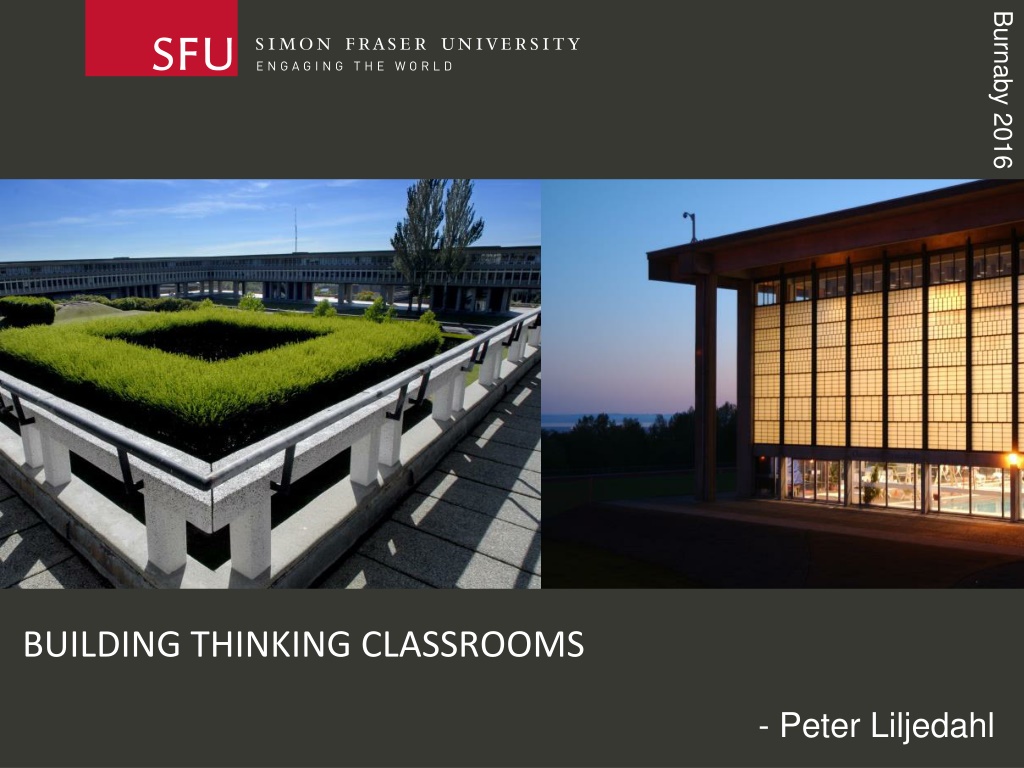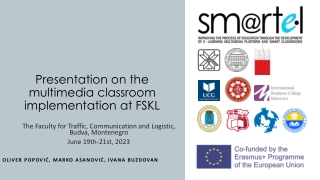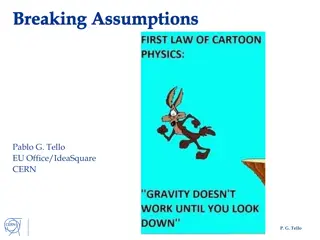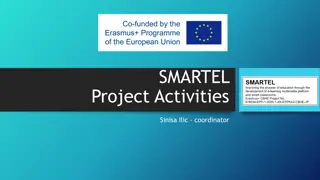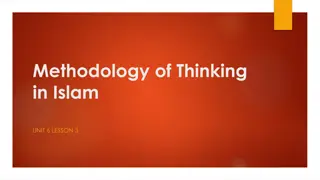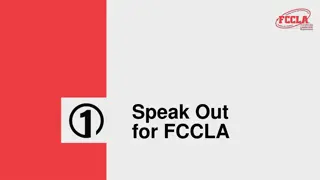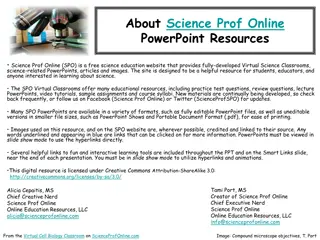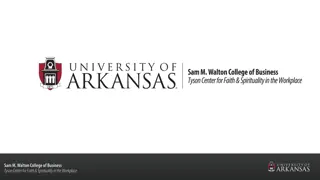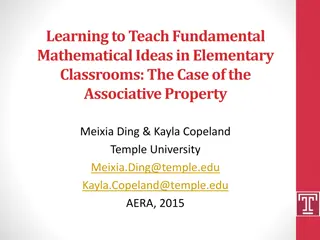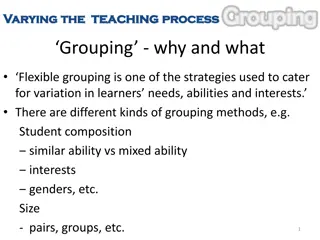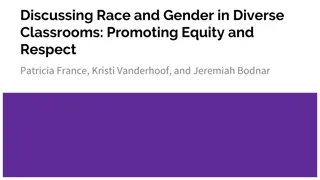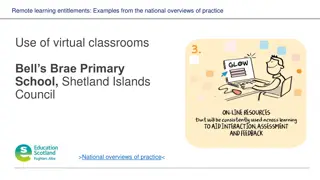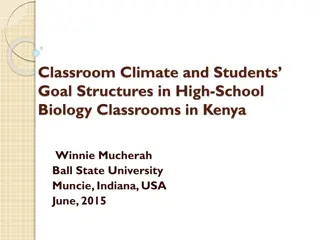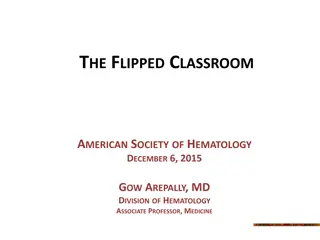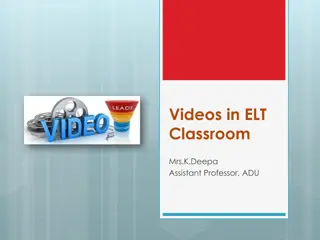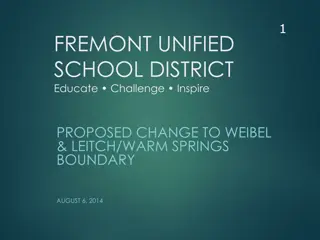Building Thinking Classrooms with Burnaby 2016
"Explore innovative approaches to classroom dynamics and student engagement in Burnaby 2016 through methods like mimicking, checking understanding, and vertical non-permanent surfaces. Discover positive effects on students' learning and engagement based on extensive trials and findings."
Download Presentation

Please find below an Image/Link to download the presentation.
The content on the website is provided AS IS for your information and personal use only. It may not be sold, licensed, or shared on other websites without obtaining consent from the author. Download presentation by click this link. If you encounter any issues during the download, it is possible that the publisher has removed the file from their server.
E N D
Presentation Transcript
Burnaby 2016 BUILDING THINKING CLASSROOMS - Peter Liljedahl
Burnaby 2016 n=32 Mimicking (n=17) Slacking (n=3) Checking Understanding (n=6) Stalling (n=4) catching up on notes (n=0) NOW YOU TRY ONE
Burnaby 2016 CASTING ABOUT (n = 300+)
Burnaby 2016 tasks hints and extensions how we give the problem how we answer questions how we level room organization how groups are formed student work space how we give notes assessment THINGS I (WE) TRIED
Burnaby 2016 VARIABLE tasks hints and extensions how we give the problem how we answer questions how we level room organization how groups are formed student work space how we give notes assessment POSITIVE EFFECT good tasks managing flow oral vs. written 3 types of questions level to the bottom defronting the room visibly random groups vertical non-permanent surfaces don't 3 purposes FINDINGS
Burnaby 2016 levelling assessment flow answering questions oral instructions defronting the room good tasks vertical non- permanent surfaces visibly random groups FINDINGS BIGGEST IMPACT
Burnaby 2016 levelling assessment flow answering questions oral instructions defronting the room good tasks vertical non- permanent surfaces visibly random groups FINDINGS BIGGEST IMPACT
Burnaby 2016 VERTICAL NON-PERMANENT SURFACES (VNPS)
Burnaby 2016 PROXIES FOR ENGAGEMENT time to task time to first mathematical notation amount of discussion eagerness to start participation persistence knowledge mobility non-linearity of work 0 - 3 EFFECT ON STUDENTS
Burnaby 2016 vertical non-perm 10 12.8 sec 20.3 sec 2.8 3.0 2.8 2.6 2.5 2.7 horizontal non-perm 10 13.2 sec 23.5 sec 2.2 2.3 2.3 2.6 1.2 2.9 vertical permanent 9 12.1 sec 2.4 min 1.5 1.2 1.8 1.8 2.0 1.0 horizontal permanent 9 14.1 sec 2.1 min 1.1 1.0 1.6 1.9 1.3 1.1 notebook N (groups) time to task first notation discussion eagerness participation persistence mobility non-linearity 8 13.0 sec 18.2 sec 0.6 0.9 0.9 1.9 1.2 0.8 EFFECT ON STUDENTS
Burnaby 2016 vertical non-perm 10 12.8 sec 20.3 sec 2.8 3.0 2.8 2.6 2.5 2.7 horizontal non-perm 10 13.2 sec 23.5 sec 2.2 2.3 2.3 2.6 1.2 2.9 vertical permanent 9 12.1 sec 2.4 min 1.5 1.2 1.8 1.8 2.0 1.0 horizontal permanent 9 14.1 sec 2.1 min 1.1 1.0 1.6 1.9 1.3 1.1 notebook N (groups) time to task first notation discussion eagerness participation persistence mobility non-linearity 8 13.0 sec 18.2 sec 0.6 0.9 0.9 1.9 1.2 0.8 EFFECT ON STUDENTS
Burnaby 2016 VISIBLY RANDOM GROUPS (VRG)
Burnaby 2016 students become agreeable to work in any group they are placed in there is an elimination of social barriers within the classroom mobility of knowledge between students increases reliance on co-constructed intra- and inter-group answers increases reliance on the teacher for answers decreases engagement in classroom tasks increase students become more enthusiastic about mathematics class EFFECT ON STUDENTS
Burnaby 2016 levelling assessment flow answering questions oral instructions defronting the room good tasks vertical non- permanent surfaces visibly random groups WHAT NEXT?
Burnaby 2016 Grades 10 to 12 Healthy Living
Burnaby 2016 Question Number
Burnaby 2016 THANK YOU! liljedahl@sfu.ca www.peterliljedahl.com/presentations #VNPS
